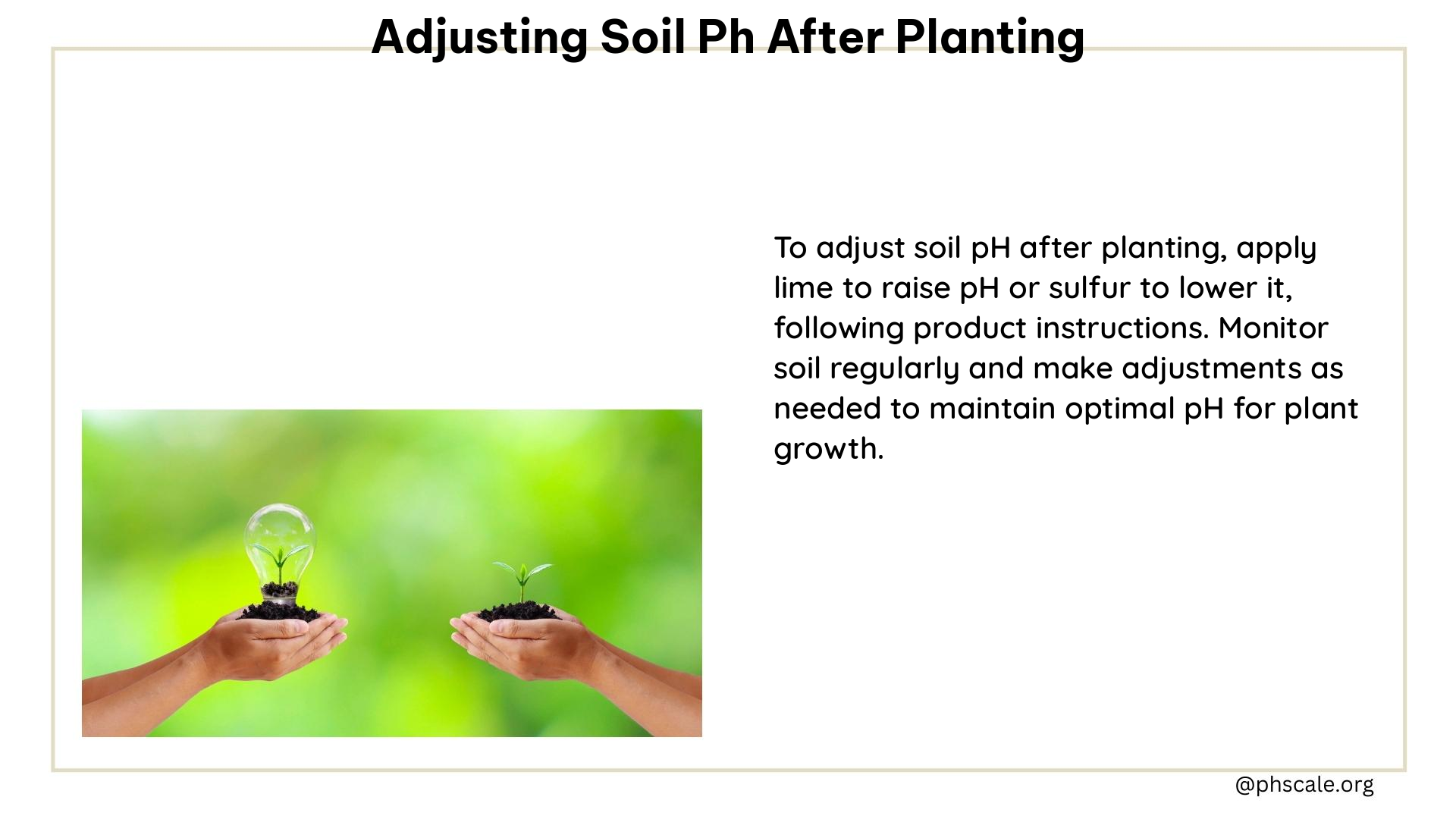Adjusting soil pH after planting is crucial to ensure optimal plant growth and nutrient uptake. Whether your soil is too acidic or too alkaline, there are various materials and techniques you can use to bring it back to the ideal range for your plants. In this comprehensive guide, we’ll explore the key steps to adjusting soil pH after planting, including the materials to use, application rates, and timing considerations.
Raising Soil pH (Too Acidic)
When your soil is too acidic, with a pH below 6.0, it’s necessary to raise the pH to create a more favorable environment for plant growth. The most common material used for this purpose is limestone, which comes in various forms such as pulverized, granular, pelletized, and hydrated.
Materials to Use
- Limestone: Limestone is the most effective and widely used material for raising soil pH. It comes in different forms, each with its own advantages:
- Pulverized Limestone: Finely ground limestone that reacts quickly with the soil, but may be more expensive.
- Granular Limestone: Larger particles that react more slowly but are less expensive.
- Pelletized Limestone: Compressed limestone that is easy to apply and spreads evenly.
-
Hydrated Lime: Also known as slaked lime, this form reacts quickly but can be more caustic and may burn plants if not applied properly.
-
Wood Ashes: While wood ashes can also be used to raise soil pH, they are less effective than limestone and require higher application rates.
Application Rates
The amount of lime needed to raise the soil pH will depend on the initial pH level and the size of the area being treated. As a general guideline:
- Lawns: Apply 50-200 pounds of lime per 1,000 square feet, depending on the initial pH level.
- Gardens: Apply 20-100 pounds of lime per 100 square feet, depending on the initial pH level.
Timing
The best time to apply lime is after a rain in the spring or fall. This helps the lime incorporate into the soil and minimizes the risk of it being washed away. Avoid applying lime during drought, heat, or when plants are under stress, as this can lead to leaf burn or other issues.
Lowering Soil pH (Too Alkaline)

If your soil is too alkaline, with a pH above 7.0, you’ll need to lower the pH to create a more favorable environment for plant growth. The most common materials used for this purpose are aluminum sulfate and elemental sulfur.
Materials to Use
-
Aluminum Sulfate: Aluminum sulfate is a fast-acting material that can quickly lower soil pH. However, it can also cause leaf burn if not washed off plant leaves immediately after application.
-
Elemental Sulfur: Elemental sulfur is a slower-acting but more economical option. It requires soil bacteria to convert it to sulfuric acid, which can take several months to take effect.
-
Sulfuric Acid: Sulfuric acid is a fast-acting material for lowering soil pH, but it is dangerous and not recommended for home gardeners.
Application Rates
The amount of acidifying material needed will depend on the desired pH change and the size of the area being treated. As a general guideline:
- Aluminum Sulfate: Apply 4-6 pounds per plant to decrease the pH by one unit.
- Elemental Sulfur: Apply one-sixth the rate of aluminum sulfate.
Timing
When lowering soil pH, it’s important to apply the acidifying materials before planting to avoid root burn. You can also use a top-dressing approach, applying small amounts (1-2 cups per plant) and repeating monthly until the desired pH is reached.
Additional Tips
-
Soil Testing: Regularly test your soil pH to determine the need for adjustments. This will help you make informed decisions about the appropriate materials and application rates.
-
Moisture: Ensure the soil is moist for the lime or acidifying materials to react effectively. Applying these materials to dry soil can reduce their effectiveness.
-
Organic Matter: Adding compost, manure, or other organic materials can help reduce soil pH over time by increasing bacterial populations.
By following these guidelines for adjusting soil pH after planting, you can create the ideal growing conditions for your plants and ensure their long-term health and productivity.
References
- Cornell Cooperative Extension Rockland County. (n.d.). Correcting Soil pH. Retrieved from https://rocklandcce.org/resources/correcting-soil-ph
- Clemson University. (2012, October 20). Changing the pH of Your Soil. Retrieved from https://hgic.clemson.edu/factsheet/changing-the-ph-of-your-soil/
- University of Wisconsin-Madison. (2007, October 27). Reducing Soil pH. Retrieved from https://hort.extension.wisc.edu/articles/reducing-soil-ph/.
